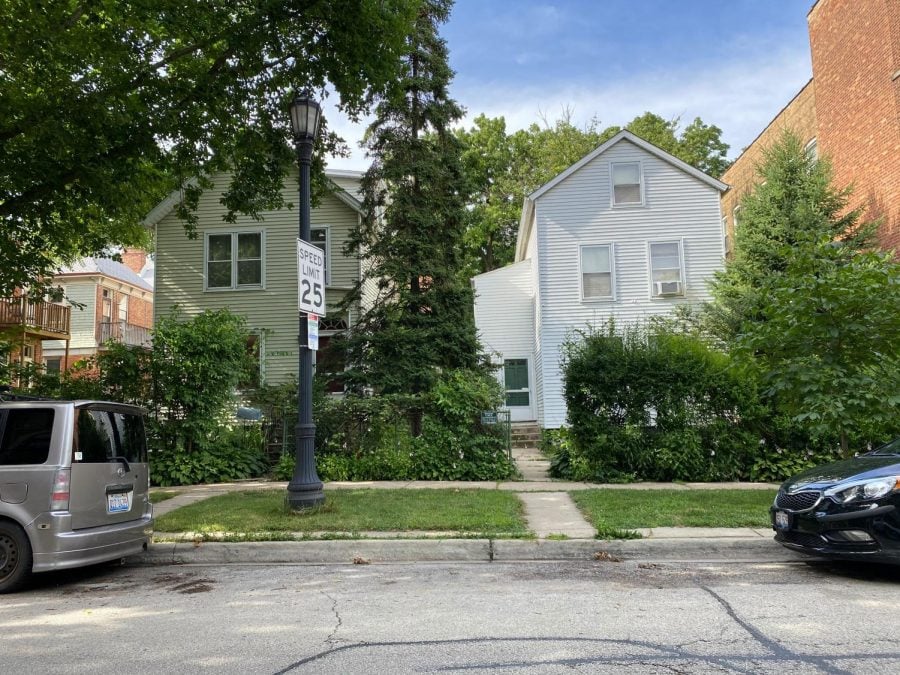Home of Evanston’s first black resident named new African American heritage site
Courtesy of Shorefront Legacy Center
325 Dempster St. was home to Evanston’s first recorded black resident, Maria Murray. It is the location for one of eight new African American heritage sites in Evanston.
August 5, 2020
Evanston’s first recorded black resident, 14-year-old Maria Murray, was bought out of slavery by the Vane family to work as an indentured servant in 1855. The home she shared with her husband, George Robinson, located at 325 Dempster St. is one of eight new African American heritage sites located across Evanston.
Murray was not an entirely free woman upon her arrival nor did she enter a completely free state.
According to Dino Robinson Jr., founder of the Shorefront Legacy Center, indentured servitude was a rebranded form of slavery. From 1819 to 1865, Illinois imposed stringent Black Codes which perpetuated indentured servitude and created immense restrictions for black people.
Per the Codes, freedmen had to show certificates of freedom and register with their county. “Slaves or servants” needed permission to travel more than ten miles from their master’s home or risk physical punishment, and the basic freedoms of gathering in small groups, testifying in court or serving in the militia were denied.
All of these practices persisted despite Illinois’ nominal title as a free state in the Union and the Illinois 1848 Constitution, which outlawed “slavery and involuntary servitude.” According to state archival records, the last recorded emancipation of an Illinois slave occurred in 1863.
“Illinois was a free state with a lowercase ‘f’ rather than free with a capital ‘F,’” said historian Glennette Tilley Turner in an interview with WTTW. Titles like “indentured servant” helped obscure this reality.
Murray’s status as an indentured servant was also misrepresented locally.
“The storyline goes that Ms. Vane and Maria were friends,” Robinson said. “But it’s kind hard to imagine that if you were purchased out of slavery — there’s this sense of ownership.”
Robinson said that Murray was regarded as a local point of entertainment with the nickname “Black Maria.” He added that when Murray married George Robinson in 1868, it was a town-wide “celebration” because no one had seen a black couple married before.
“It took on a different air of entertainment rather than humility,” Robinson said.
Robinson added that even as Murray’s tenure as an indentured servant ended, it was “the way of life” in Evanston for white families to designate who was available to work. Murray would continue to work for the Vane family until her death in 1900.
“There was a sense of an attitude like, ‘You don’t know your place,’” Robinson said. However, he noted that at the same time, more black families were moving to Evanston, who had a greater sense of independence.
The Garnett and Day families, who owned boot making business and a carpeting company, respectively, arrived in Evanston in the late 1800s, and joined Maria Murray and George Robinson along with a total of twenty members to found the Second Baptist Church in 1882. The church would be known as a hub for both activism and culture within the Evanston’s black community — a status which remains to this day.
Although Second Baptist Church is not currently recognized as an African American heritage site, its predecessor Ebenezer AME Church will be recognized. Its story along with Murray’s could be included in self guided tours, exhibits and a website, according to a city memorandum.
“The goal is to link the history of African Americans in Evanston to the vibrant community existing in the city today,” said Carlos Ruiz, the city’s senior planner and preservation coordinator.
Email: [email protected]
Twitter: @oliviayarvis
Related Stories:
— Butler Livery Stable’s original location at 914 Davis St. named new African American heritage site


